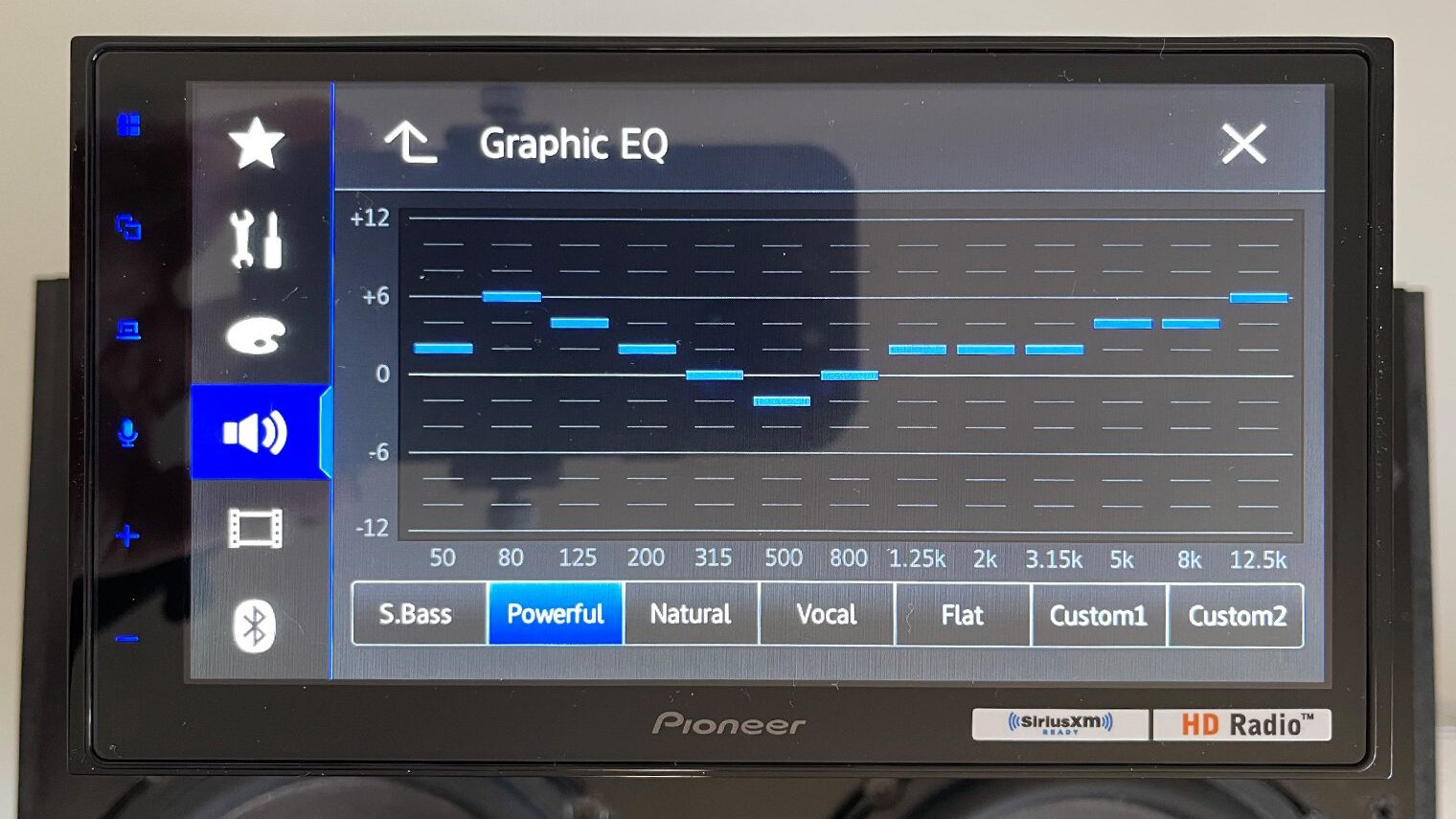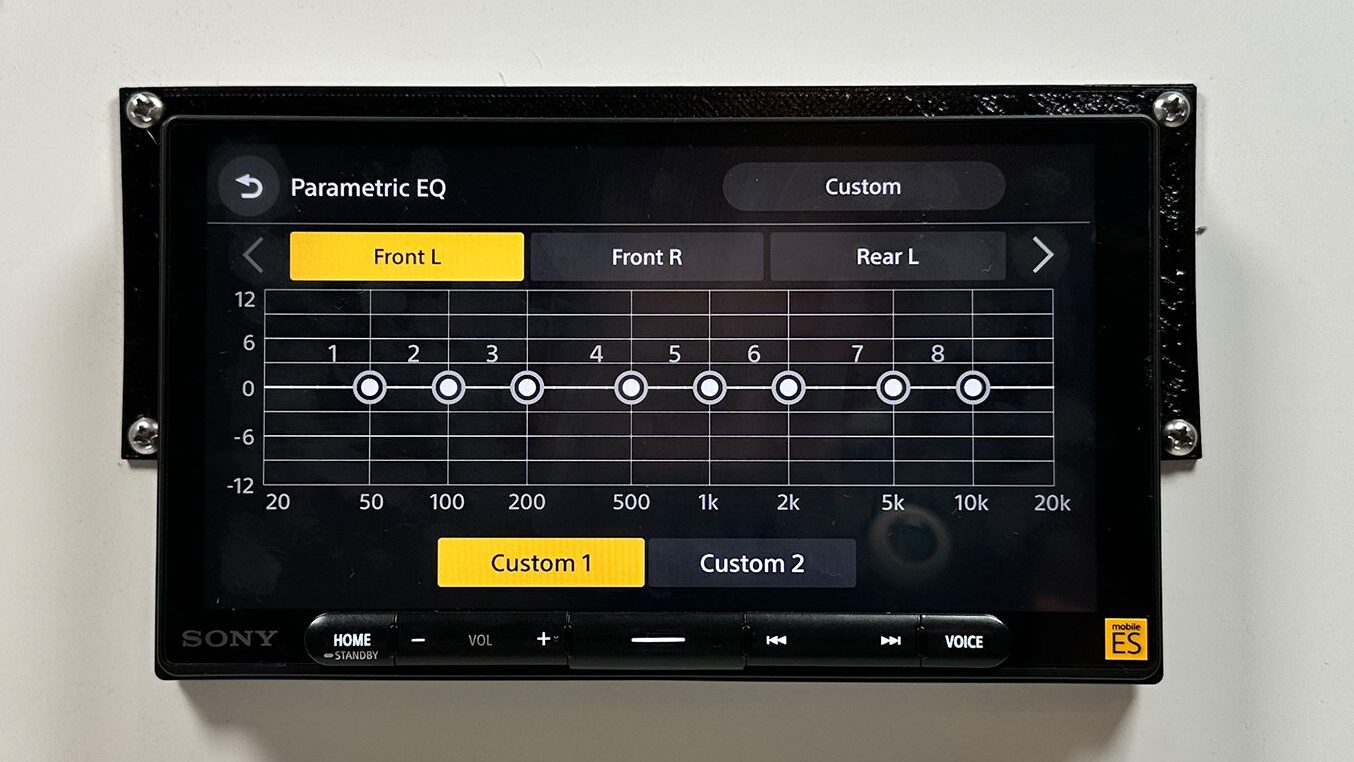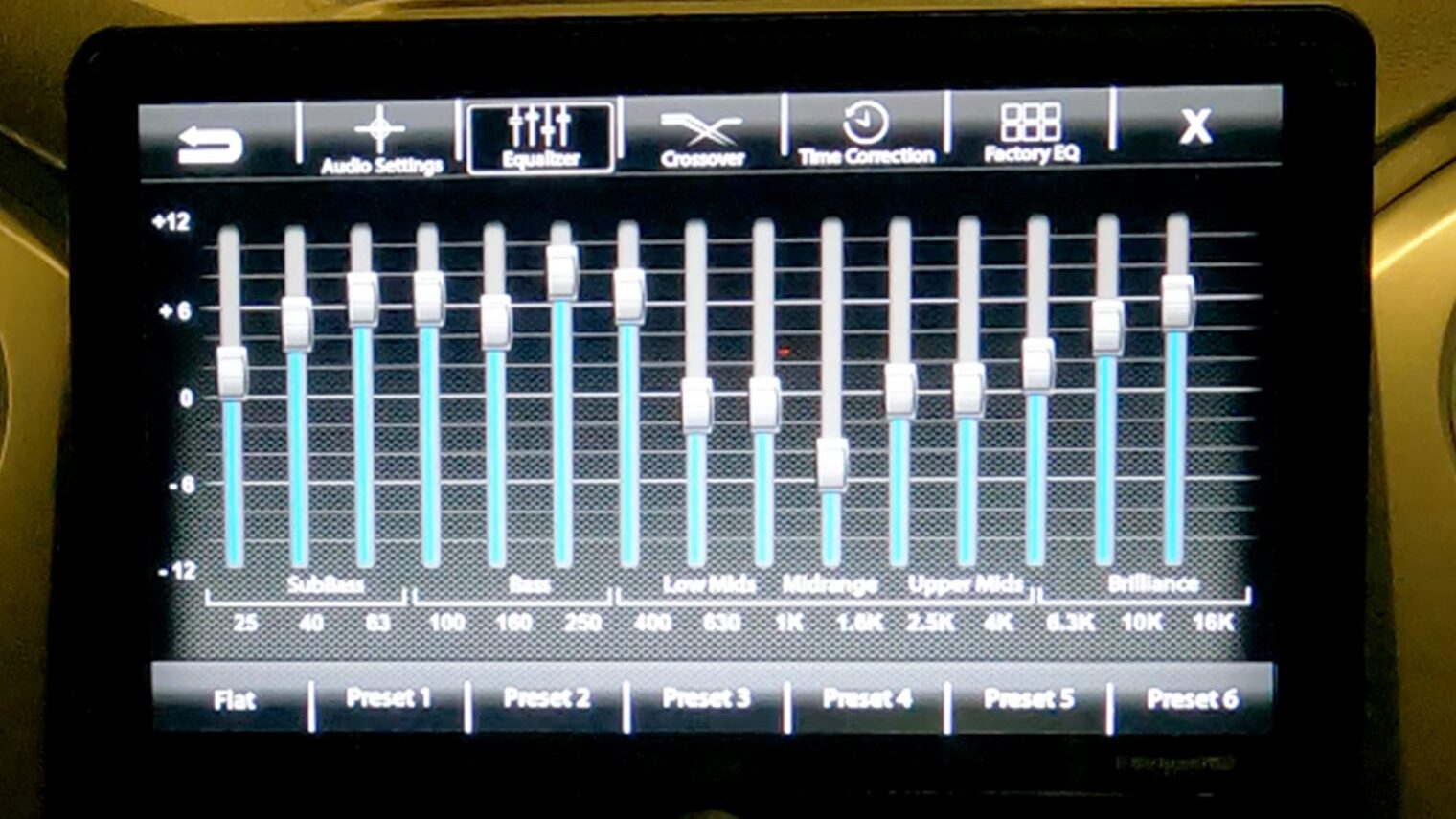Home > Learn > What Are Equalizers: Everything You Want to Know
Your car’s sound system is affected by numerous factors, from engine noise to wind and the size of the cabin. With an equalizer, you can fine-tune the sound to match your environment. But, what are equalizers and how do you use one to boost your system’s tone? Let’s dive in and find out.
What is an Equalizer?
The equalizer, or EQ, allows you to fine-tune the sound coming from your audio system. It permits advanced tone adjustment that isn’t handled by the standard bass, midrange or treble controls.
You can find a variety of equalizers, from a standard under-dash option to the more advanced digital models that get installed in the trunk. You can even find an equalizer for your boat, such as the Wet Sounds WS-420BT.
A few EQs will work with your factory stereo, while others are going to do better with aftermarket options. You also have to be careful because a few are only meant to work with a certain brand.
How an Equalizer Benefits the System
So, you are looking for ways to improve car audio sound quality, will an equalizer help you? Absolutely!
The EQ provides precise control over the tones your audio system puts out. When used properly, it can fine-tune even the best systems on the market.
What’s best is you can adjust the sound quality to match your tastes. With the right setup, you can enjoy your music without having to listen to all the road noise and car rattles.
The equalizer is a great tool for overpowering any road-noise, vehicle noise, seat absorbency, glass reflections and the shape of the cabin to provide you with the ultimate sound. When adjusted correctly, you find frequencies that you would have otherwise missed.
Another benefit to the EQ is that it can protect your expensive audio equipment. Let’s say that you use two 6-1/2” subwoofers to supply bass. If you adjust the EQ to cut out all frequencies under 50 Hz, you allow the amp to work efficiently and you end up with cleaner, more pronounced volume while ensuring the speaker drivers only get the tones they are meant to.
After all these years in the business, we know this much. If you install an equalizer and adjust it correctly, you will no longer wonder if it is beneficial. You will become a believer.
Types of Car Audio Equalizers
When it comes to audio equipment, you can find a variety of equalizer types.
Graphic Equalizer

This type of EQ provides a graphic representation, allowing you to adjust the system visually. You will see audio filters with sliders, enabling you to change the sound by simply shifting the controls up or down. On the left of this EQ, you find the bass (low) side, while the right contains the treble (high) side.
Parametric Equalizer

The parametric EQ goes beyond conventional options. These devices allow you to control the boost levels, widths and center frequency. With this type of equalizer, you can select a more focused boost or a sweeping one.
Unlike the graphic EQ, you aren’t going to be able to make as many fine-tuning adjustments. For example, your five-band graphic equalizers will contain sliders to control five fixed frequencies, such as 30Hz for low bass, 100 Hz for mid-bass, 1 kHz for midrange, 10 kHz for the upper midrange and 20 kHz for the high-frequency or treble.
EQ Booster
The EQ Booster acts as both an amp and an equalizer. While it doesn’t perform as well as a stand-alone amplifier, it is still a decent alternative if you are looking to keep the cost down. Overall, the built-in amplifier is comparable to what you would find in many aftermarket receivers, but it also includes the equalizer as a bonus.
Analog Equalizer
You know an analog EQ by the sliders and dials that are used to make adjustments. Of all your options, this will keep the price down the most.
Digital Equalizer

The more modern option is to go digital. With this EQ, you get a menu screen instead of slide controls or knobs. You can make more precise adjustments, knowing exactly where every frequency stands. You can also save some settings, which is helpful if you listen to different types of music. With the analog equalizer, you won’t have this option.
Car Audio Equalizer Tips
If you are ready to take the leap and invest in an EQ, consider these helpful tips.
- Don’t skimp on the wiring. The cheap RCAs are going to leave you with hissing, static, buzzing, popping or humming that will become distracting. Spend more on your cables for the best outcome.
- Check the connections if you do hear humming. A lot of times a loose cable or screw will lead to disruptive sounds.
- Take time to get to know the EQ. By experimenting, you can find the best sound for your needs. With a little practice, you will know exactly how to get what you want.
- However, when you make adjustments, be light with the changes. Going too fast too quickly can lead to distortion. Instead of raising everything up, try lowering some of the frequencies instead.
Equalizer FAQs
Do I need to use an amp with my equalizer?
It’s not required. Because the majority of car receivers already have some form of a built-in amp, you can choose to add an equalizer that works with your unit instead.
Is it hard to install an equalizer?
If you have some car audio knowledge and don’t mind following simple directions, you can perform the equalizer installation yourself. However, if you are unsure, it’s always best to get a knowledgeable friend or professional to take over.
What is the difference between a crossover and an equalizer?
The crossover is designed to cap the range of frequencies set to the amp or speaker. With this piece of equipment, you adjust the signal strength being sent out. The equalizer allows you to cut or boost the frequency output instead.
Do I want to use the factory presets?
There’s no shame in relying on the options. As a beginner, the “pop” and “rock” settings can teach you a lot. However, you aren’t going to get completely tailored sound from these presets, so you should look to customize them as you learn more.
Where should I mount an equalizer?
You have two options. Purchase a dash-mounted equalizer that gets installed on top of or below your receiver or look for a trunk-mounted equalizers that get installed in the cargo area near your amp.
Create the Perfect Sound
It doesn’t take much to create a high-level of sound from your car stereo. Once you’ve completed all the ways to upgrade your car audio for less than $100, we recommend investing a little more and getting an equalizer. With complete control over the sound quality, you won’t be disappointed.
